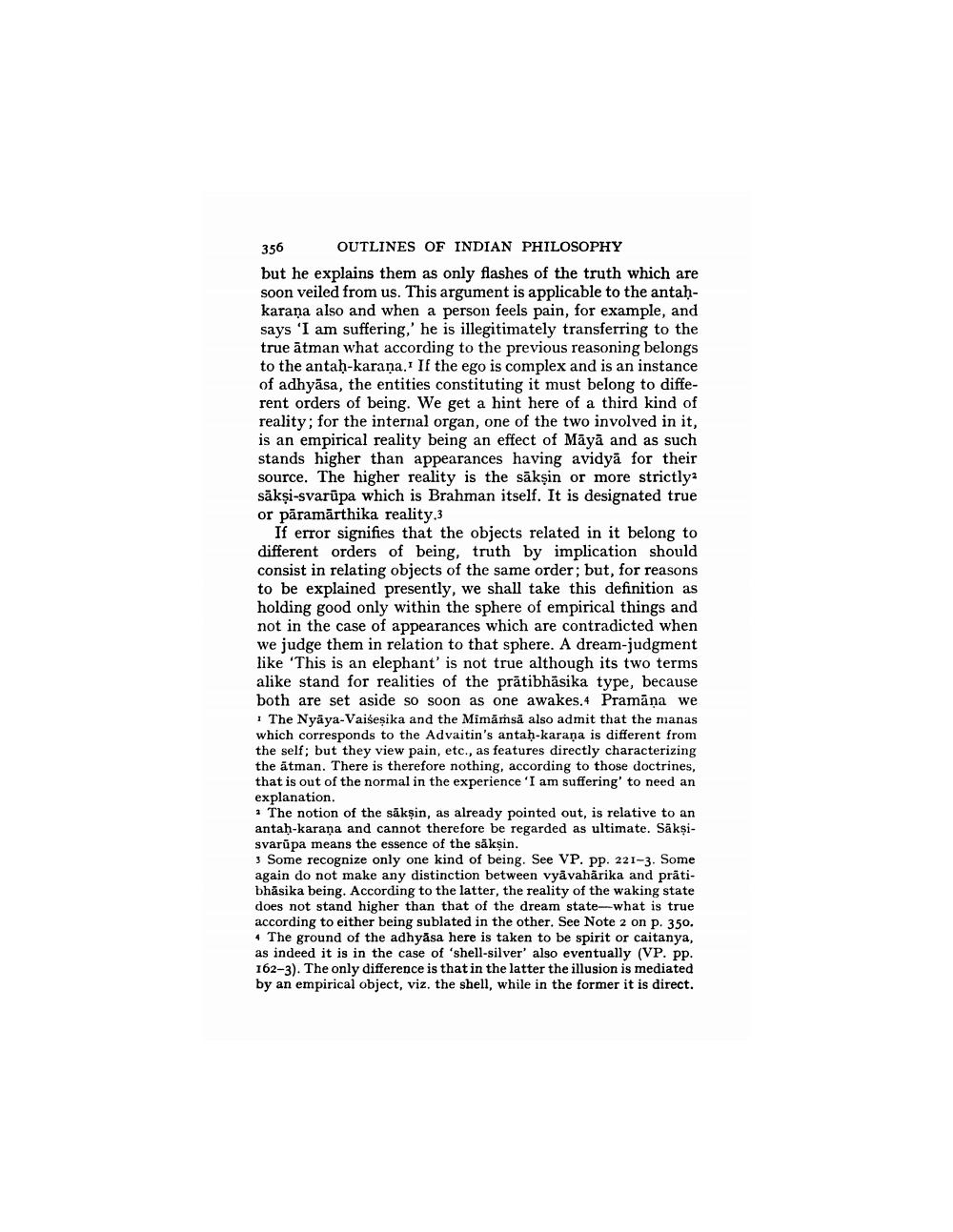________________
356 OUTLINES OF INDIAN PHILOSOPHY but he explains them as only flashes of the truth which are soon veiled from us. This argument is applicable to the antahkaraņa also and when a person feels pain, for example, and says 'I am suffering,' he is illegitimately transferring to the true ātman what according to the previous reasoning belongs to the antah-karana.. If the ego is complex and is an instance of adhyāsa, the entities constituting it must belong to different orders of being. We get a hint here of a third kind of reality; for the internal organ, one of the two involved in it, is an empirical reality being an effect of Maya and as such stands higher than appearances having avidyā for their source. The higher reality is the sāksin or more strictly2 säkşi-svarüpa which is Brahman itself. It is designated true or pāramārthika reality.3
If error signifies that the objects related in it belong to different orders of being, truth by implication should consist in relating objects of the same order; but, for reasons to be explained presently, we shall take this definition as holding good only within the sphere of empirical things and not in the case of appearances which are contradicted when we judge them in relation to that sphere. A dream-judgment like 'This is an elephant' is not true although its two terms alike stand for realities of the prātibhäsika type, because both are set aside so soon as one awakes. Pramāna we
The Nyāya-Vaišesika and the Mimāmsă also admit that the manas which corresponds to the Advaitin's antah-karana is different from the self; but they view pain, etc., as features directly characterizing the atman. There is therefore nothing, according to those doctrines, that is out of the normal in the experience 'I am suffering' to need an explanation. · The notion of the sākşin, as already pointed out, is relative to an antah-karana and cannot therefore be regarded as ultimate. Saksisvarūpa means the essence of the sākṣin. 3 Some recognize only one kind of being. See VP. PP. 221-3. Some again do not make any distinction between vyåvahārika and prätibhāsika being. According to the latter, the reality of the waking state does not stand higher than that of the dream state--what is true according to either being sublated in the other. See Note 2 on p. 350.
The ground of the adhyāsa here is taken to be spirit or caitanya, as indeed it is in the case of 'shell-silver' also eventually (VP. pp. 162-3). The only difference is that in the latter the illusion is mediated by an empirical object, viz. the shell, while in the former it is direct.




